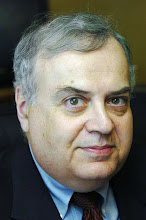Who's watching?
It was pretty much the ground floor for public access and the broadcasts (and broadcasters) were predictably primitive -- not unlike most of the stuff that passes for public access content today.
There'd be two, maybe three, cameras for the games. And our broadcast "booth" was little more than a folding table either in the middle of the stands, when we did games at Cantine Field in Saugerties, or behind home plate, field level, uncovered, when we were at Dietz Stadium in Kingston. (How many of you remember when there was a baseball field at Dietz Stadium?)
Best I could tell, the players watched the taped delay games. Probably their families and others close to the teams saw some of the broadcasts. My wife may have watched for two or three pitches. And, of course, those who us who did the games watched them, too. Would I be exaggerating if I said, oh, about 100 people tuned in?
Fact is, we had no way of knowing how many people watched then. And there's no way of knowing a quarter-century later who watches today. Yes, there are people who tune in -- some accidentally, as they stop on their way clicking from one channel to the next, some when they notice a familiar face on the screen, others who actually like what they've seen before and come back next time.
But if public access, still largely production and content challenged, has a way of measuring precisely how many folks watch, I'm not aware of it. Put another way, the Nielsen ratings haven't yet come to public access TV. Which is why I wonder how people can cavalierly refer to their programs as "highly rated" (by what?) or "heavily watched" (by whom?).
Here's what I like about the concept of public access TV: live or unedited tape of events -- public meetings, parades, sporting events (without amateur announcers like I was behind the microphone), plays, musicals and the like. I'm not a proponent of the talk shows, political and others, regardless of the points of view.
The thing is, there are some viewers who aren't able to make the distinction between professional broadcast journalists and interviewers, and someone who hangs up a figurative shingle on the porch of a public access TV station and calls him/herself a "producer."
Where I come from, you have to earn your stripes to be a journalist. You've taken classes, worked your way up, learned at the feet of those who have made the climb before you. In the real world of local and network television, you don't become a commentator until you've proven yourself. In the play world of public access TV, all you need to do is pass the relatively easy criteria of a local cable governing body.
I should point out that my frame of reference for public access for the last couple of decades is what I see on the Woodstock channel. I don't get the Kingston programming at my home (and I don't have time to watch it on the TV at the Freeman.)
Again, make public access the C-SPAN of local TV. Turn on the cameras and let the events speak for themselves.
But since that's not likely to happen, I hope you relative handful of public access viewers will be educated consumers of what's on your screens. And as soon as you "producers" get an accurate idea of how many people actually are watching, drop me a line.
 RSS
RSS


<< Home